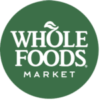
How Canola Oil Is Made: A Comprehensive Guide
Canola oil is a popular cooking oil known for its light flavor and high smoke point, making it a favorite among chefs and home cooks alike. But have you ever wondered how this versatile oil is made? In this article, we will explore the entire process of canola oil production, from seed to bottle, and answer some key questions related to its manufacturing.
Canola oil is derived from the seeds of the canola plant, a member of the Brassica family, which also includes cabbage, broccoli, and mustard. The name "canola" is derived from "Canadian oil, low acid," reflecting its origins in Canada. This oil is prized for its health benefits, including being low in saturated fats and high in omega-3 fatty acids.
The journey from canola seed to oil involves several key steps, each designed to extract the oil efficiently while maintaining quality. Here’s a breakdown of the manufacturing process:
The first step in the canola oil production process is cleaning the seeds. This involves removing any foreign materials, such as weed seeds, stems, and pods, that may have been harvested along with the canola seeds. Thorough cleaning ensures that the oil produced is of high quality and free from impurities.
Once the seeds are clean, they are heated and flaked. The heating process raises the temperature slightly to prevent the seeds from shattering during the next steps. The seeds are then passed through rollers to gently rupture the cell walls and create flakes. This flaking process increases the surface area of the seeds, allowing for more efficient oil extraction.
The flaked seeds undergo cooking in a series of heating drums or cookers. This step ruptures additional cell walls and optimizes the oil's viscosity and moisture content. Cooking is crucial as it also helps to prevent the breakdown of compounds that could negatively affect the oil's quality.
After cooking, the flakes are subjected to a pressing process using screw presses or expellers. This mild pressing removes the majority of the oil while compressing the remaining seed material into a cake. The pressing process is essential for extracting as much oil as possible without damaging the quality.
To recover the remaining oil, the press cake is treated with a solvent, typically hexane. The solvent percolates through the cake and dissolves the remaining oil, which is then separated from the solids. The hexane is subsequently removed from both the oil and the solids, allowing it to be reused in the extraction process.
The crude canola oil undergoes further refining to enhance its color, flavor, and shelf life. This process involves several steps, including:
Once refined, the canola oil is ready for packaging and distribution.
After the oil is extracted, the remaining solids are processed into canola meal, a high-protein ingredient commonly used in animal feed. This meal undergoes toasting, cooling, and granulation before being packaged for sale.
While traditional methods dominate canola oil production, some manufacturers use alternative processes:
The production of canola oil is a carefully controlled process that transforms seeds into a versatile cooking oil enjoyed worldwide. From cleaning and pressing to refining and meal processing, each step is designed to ensure the oil's quality and safety. Understanding how canola oil is made not only enhances our appreciation for this popular ingredient but also highlights the importance of quality control in food production. Whether you're using it for frying, baking, or salad dressings, knowing the journey of canola oil can make your culinary experience even more enjoyable.
Canola oil is a cooking oil made from the seeds of the canola plant, which is part of the Brassica family. The name "canola" stands for "Canadian oil, low acid," reflecting its origins in Canada. It is valued for its light flavor and health benefits, including low saturated fats and high omega-3 fatty acids.
The extraction process involves several steps: cleaning the seeds, heating and flaking them, cooking the flakes, pressing to remove oil, and solvent extraction to recover remaining oil. Finally, the oil is refined to enhance its quality before packaging.
Refining canola oil includes degumming to remove lipids, bleaching to filter out color pigments, and deodorizing to eliminate unpleasant odors. These steps improve the oil's color, flavor, and shelf life.
After oil extraction, the remaining solids are processed into canola meal, a high-protein ingredient often used in animal feed. The meal is toasted, cooled, and granulated before being packaged for sale.

Is Canola Oil Whole30 Compliant? A Comprehensive Guide
The Whole30 program has gained popularity as a dietary reset that focuses on whole, unprocessed foods. If you're considering this program or are already on it, you may be wondering about the compatibility of various cooking oils, ...

Avocado Oil vs Canola Oil: Which is the Healthier Choice?
When it comes to cooking oils, the choice can significantly impact both flavor and health. Among the numerous options available, avocado oil and canola oil are two popular contenders. This article delves into the differences betwe...

What is Canola Oil Made From?
Canola oil is a popular cooking oil known for its versatility and health benefits. Understanding what canola oil is made from can help you make informed choices about its use in your diet. This article will explore the origins, pr...

Can You Substitute Vegetable Oil for Canola Oil?
When it comes to cooking, having a well-stocked pantry is essential, and oils are a crucial component of many recipes. Among the most commonly used oils are canola oil and vegetable oil. But can you substitute vegetable oil for ca...
Ready to source an ingredient?
Whether you’re struggling to find the perfect ingredient, racing against the clock, or simply don’t have the bandwidth to manage sourcing — we’ve got your back.
Get a Free Sourcing AuditSavings is BIG but the relationship value is MASSIVE! Glad we met when we did. Looking forward to building this partnership with you and David.
Yohan, here to say you’re one of my favorite suppliers. Aside from your high quality ingredients, you’re so great to work with. Thanks for all the help you’ve given us this year.
Working with Global Savors and Yohan has been very smooth when sourcing ingredients. They offer a great selection and and cost savings! Yohan has been awesome to work with and we look forward to continuing business together.






Global Savors is your trusted partner for seamless ingredient sourcing, offering end-to-end solutions that streamline procurement, simplify logistics, and elevate your supply chain efficiency.
View More News
© 2025 Copyrights by Global Savors. All Rights Reserved

